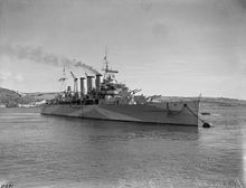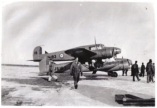As they say, history is written by the victor. No example of this is more true than the Second World War. Although many are quick to paint the Allies as heroes(and rightfully so), many forget the fact that the Allied forces also committed war crimes.Don’t get me wrong ,being born in a country which was liberated by the allied forces I am forever grateful to the heroes that sacrificed their lives so that I could live in freedom.
However it would be hypocritical to dismiss the war crimes committed by the allied troops.
Below are some examples.
Chenogne massacre

The Chenogne massacre refers to a mass execution committed on New Year’s Day, January 1, 1945, where 60 German prisoners of war were killed by American forces near the village of Chenogne (also spelled “Chegnogne”), Belgium, thought to be in retaliation for the Malmedy massacre. After the WWII.
On December 17, 1944, during the Battle of the Bulge, soldiers from the Waffen-SS gunned down 80 American prisoners at the Baugnez crossroads near the town of Malmedy. When news of the killings spread among American forces, it aroused great anger among front line troops. One American unit issued orders: “No SS troops or paratroopers will be taken prisoners but will be shot on sight.
John Fague of B Company, 21st Armored Infantry Battalion (of the 11th Armored Division), in action near Chenogne described U.S. troops killing of German prisoners:
Some of the boys had some prisoners line up. I knew they were going to shoot them, and I hated this business…. They marched the prisoners back up the hill to murder them with the rest of the prisoners we had secured that morning…. As we were going up the hill out of town, I know some of our boys were lining up German prisoners in the fields on both sides of the road. There must have been 25 or 30 German boys in each group. Machine guns were being set up. These boys were to be machine gunned and murdered. We were committing the same crimes we were now accusing the Japs and Germans of doing…. Going back down the road into town I looked into the fields where the German boys had been shot. Dark lifeless forms lay in the snow.
The official post-war history published by the United States government states that while “it is probable that Germans who attempted to surrender in the days immediately after the 17th ran a greater risk” of being killed than earlier in the year, even so, “there is no evidence… that American troops took advantage of orders, implicit or explicit, to kill their SS prisoners.”However, according to George Henry Bennett and referring to the above statement; “The caveat is a little disingenuous”, and he proceeds to note that it is likely the orders to shoot prisoners (given by the 328th Infantry regiment) were carried out, and that other US regiments were likely also given similar orders. But the killing of SS prisoners had become routine at the time for some units. The 90th Infantry Division at the Saar “executed Waffen-SS prisoners in such a systematic manner late in December 1944 that headquarters had to issue express orders to take Waffen-SS soldiers alive so as to be able to obtain information from them”
Berlin Mass Rapes
After the fall of Berlin, Germany was in ruins. Occupied by millions of foreign troops, none of whom had complete control over any given entity, Germany quickly descended into anarchic lawlessness. It is believed that the Soviet Army alone was responsible for the rape of up to two million women and children, as well as the subsequent death of 240,000.

Claimed to be the largest mass rape in history, many unfortunate victims were assaulted up to a hundred times, and often could not resist in the face of overwhelming Soviet numbers.For the most part, these atrocities were driven by the lust for revenge, although in many cases it was simply because the Soviets saw themselves as conquers, not liberators. Stalin himself was reputed to have said that people should be understanding, “if a soldier who has crossed thousands of kilometres through blood and fire and death has fun with a woman or takes some trifle.”
It wasn’t just the Soviets who were accused of this crime, however: it is believed that the US was responsible for over 11,000 rapes, while the French have been accused of over 1,500. This is clearly not on the same scale as the Soviets – but it doesn’t make it any less terrible.
Rape during the liberation of France
The invasion of Normandy in June and a second invasion in the south in August, put over two million front line and support troops of the Western Allies into France in 1944.
The Liberation of Paris followed on 25 August. Except for German forces penned in the south-west (e.g. around Bordeaux) or in ports, the majority of German troops were pushed back to the Siegfried Line by the end of 1944. After the war, the repatriation for demobilisation of the troops took time. Even in 1946, months after VE-day there were still about 1.5 million troops in Europe.The housing and management of the thousands of troops awaiting embarkation on a ship for home was a problem.
Life magazine reported the widespread view among American troops of France as “a tremendous brothel inhabited by 40 million hedonists who spent all their time eating, drinking, making love and in general having a hell of a good time”

By the late summer of 1944, soon after the invasion of Normandy, women in Normandy began to complain about rapes by American soldiers.Hundreds of cases were reported.
In 1945, after the end of the war in Europe, Le Havre was filled with American servicemen awaiting return to the States. A Le Havre citizen wrote to the mayor that the people of Le Havre were “attacked, robbed, run over both on the street and in our houses” and “This is a regime of terror, imposed by bandits in uniform. A coffeehouse owner from Le Havre testified “We expected friends who would not make us ashamed of our defeat. Instead, there came only incomprehension, arrogance, incredibly bad manners and the swagger of conquerors.” Such behavior also was common in Cherbourg. One resident stated that “With the Germans, the men had to camouflage themselves—but with the Americans, we had to hide the women.”
U.S. troops committed 208 rapes and about 30 murders in the department of Manche.French men also raped women perceived as collaborators with the Germans

A brothel, Blue and Gray Corral, was set up near the village of St. Renan in September 1944 by Maj. Gen. Charles H. Gerhardt, commander of the infantry division that landed at Omaha Beach, partly to counter a wave of rape accusations against G.I.s. (It was shut down after a mere five hours in order to prevent civilians in the United States from finding out about a military run brothel).
The Free French Forces high command sent a letter of complaint to the Supreme Commander Allied Expeditionary Force General Dwight D. Eisenhower. He gave his commanders orders to take action against all allegations of murder, rape, assault, robbery and other crimes. In August 1945, Pierre Voisin, mayor of Le Havre urged Colonel Thomas Weed, U.S. commander in the region, to set up brothels outside Le Havre However, U.S. commanders refused.
130 of the 153 troops disciplined for rape by the Army were African American.Military courts sentenced African American soldiers to more severe punishment than white American soldiers:U.S. forces executed 29 soldiers for rape, 25 of them African American. Many convictions against African Americans were, however, based on flimsy evidence at best. For example, Marie Lepottevin identified William Downs only because he was “much larger” than the other soldiers, despite the crime taking place in near darkness.




















You must be logged in to post a comment.